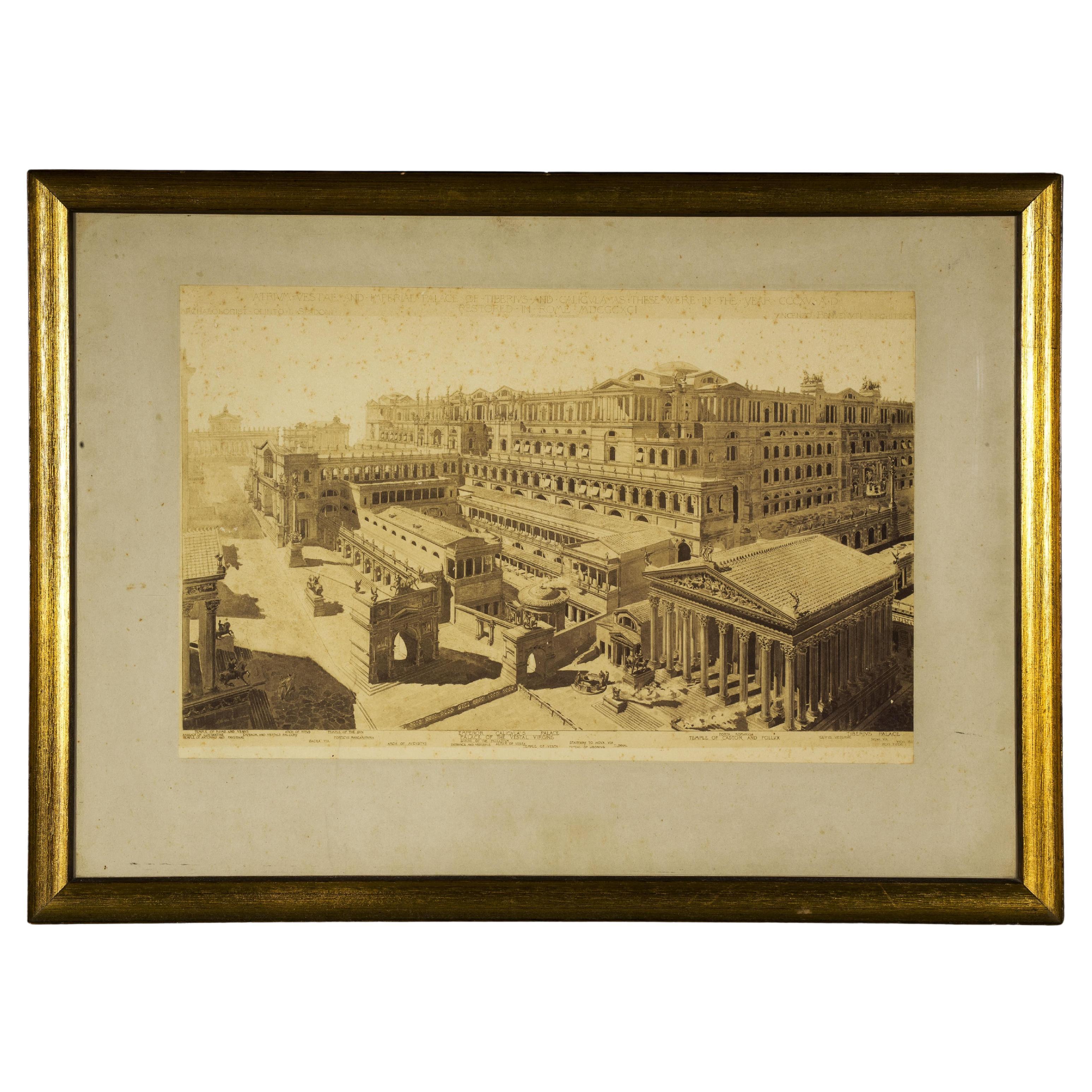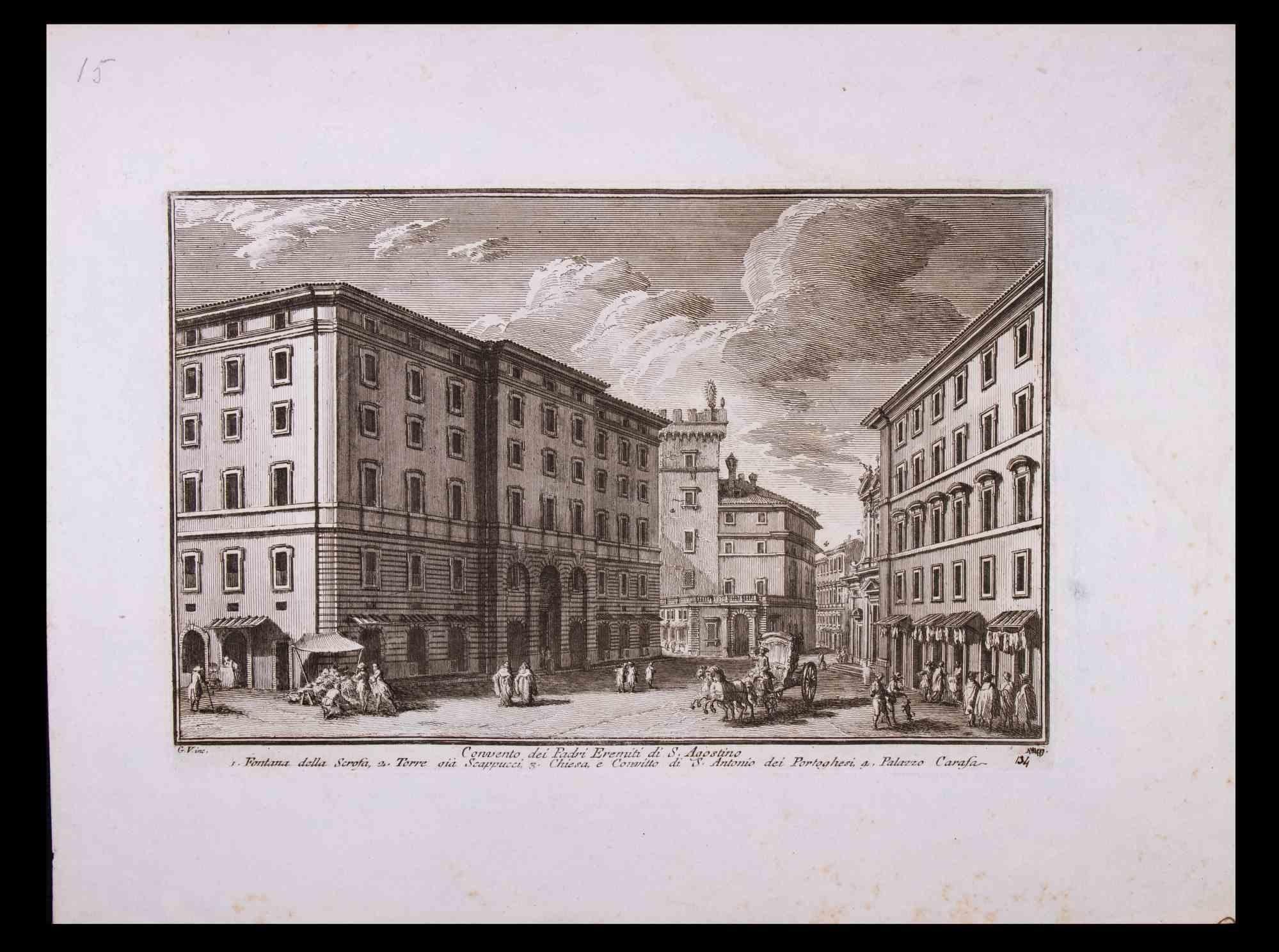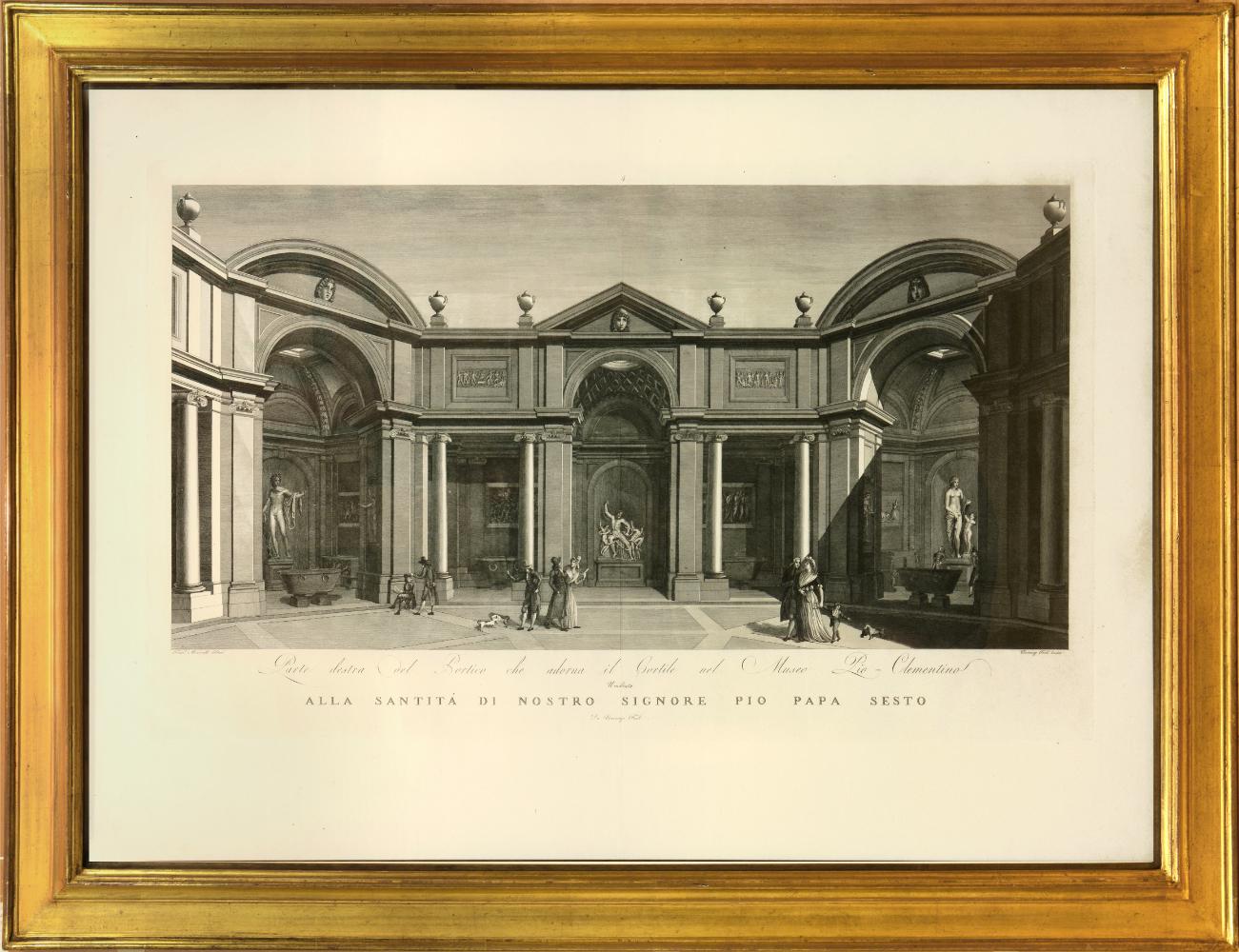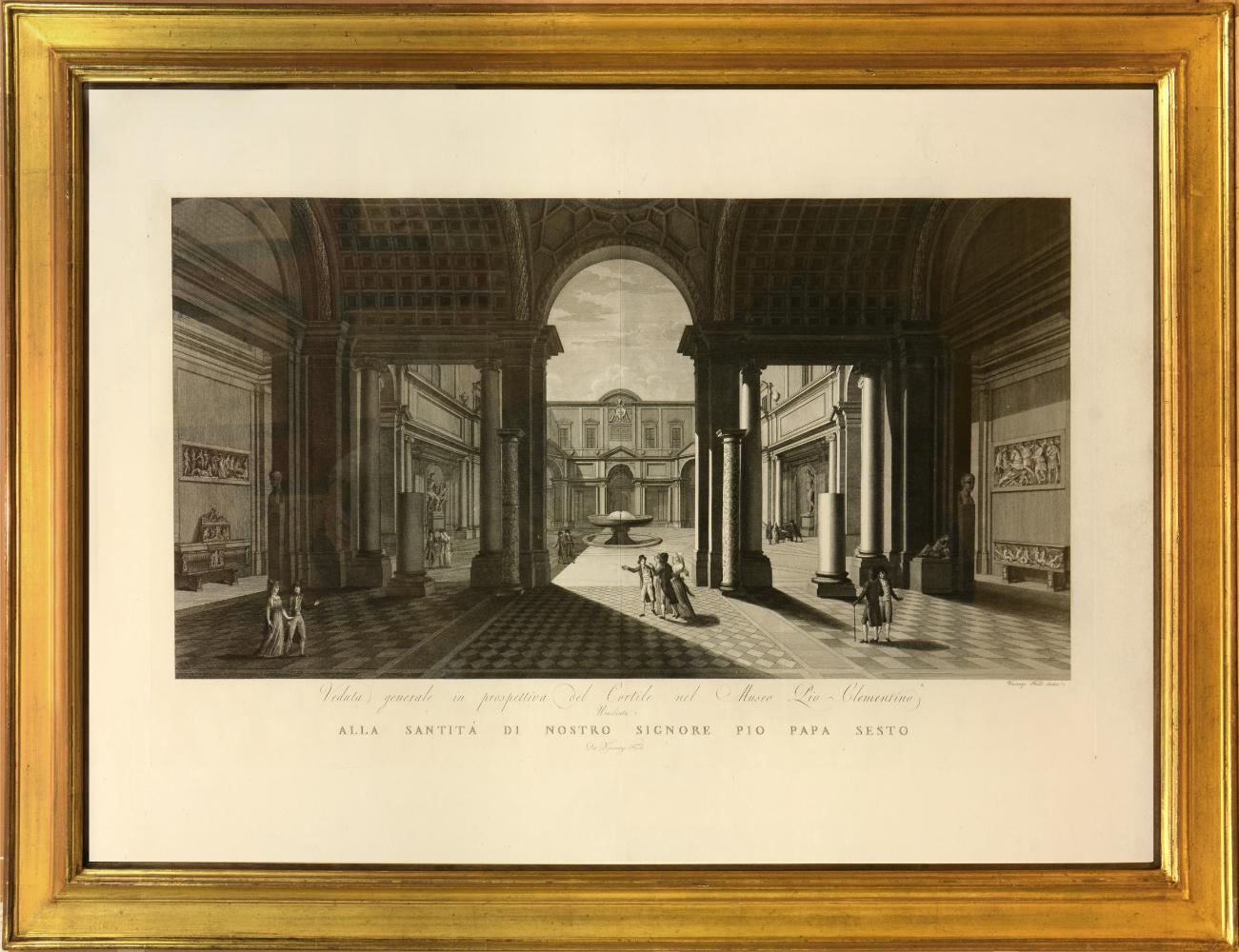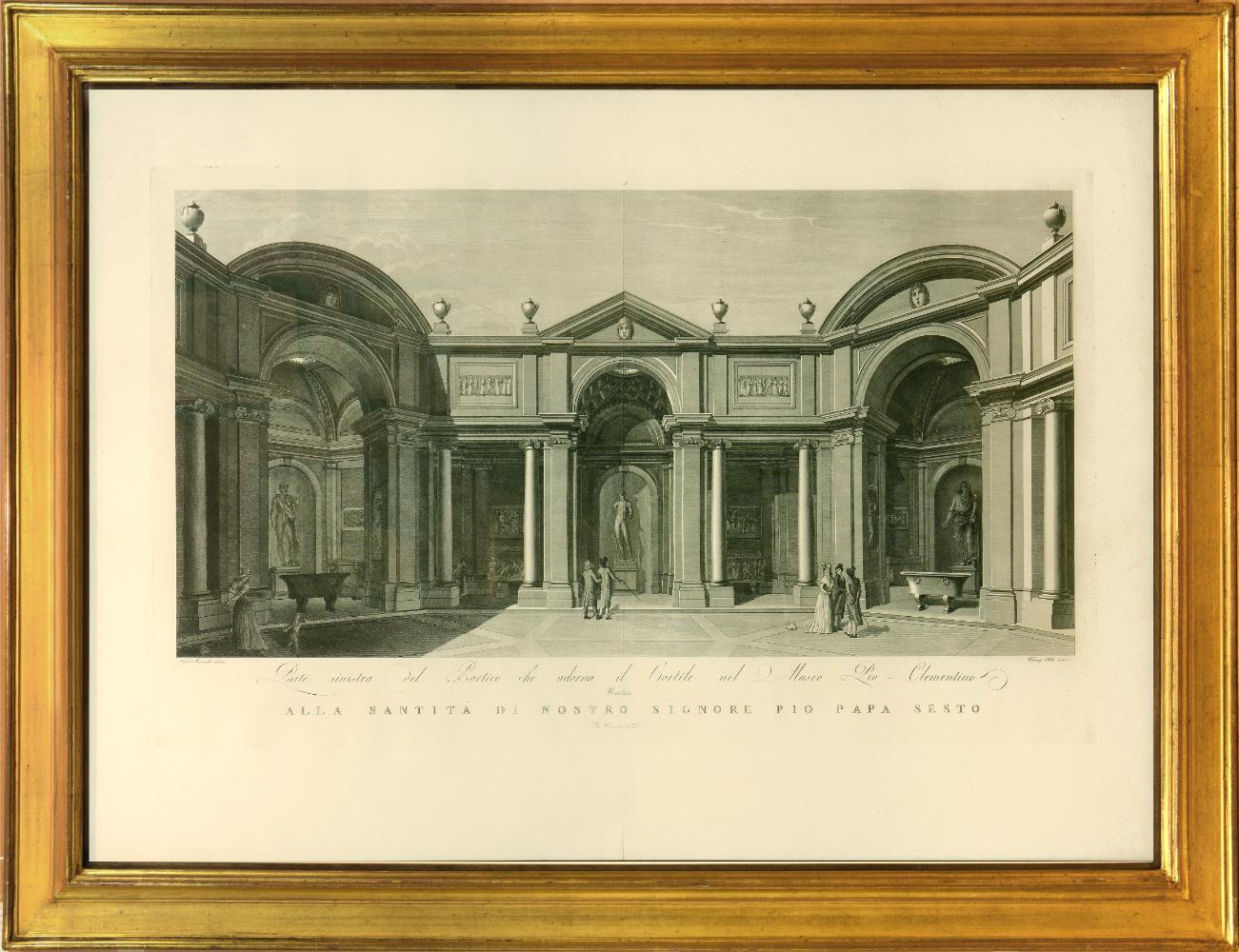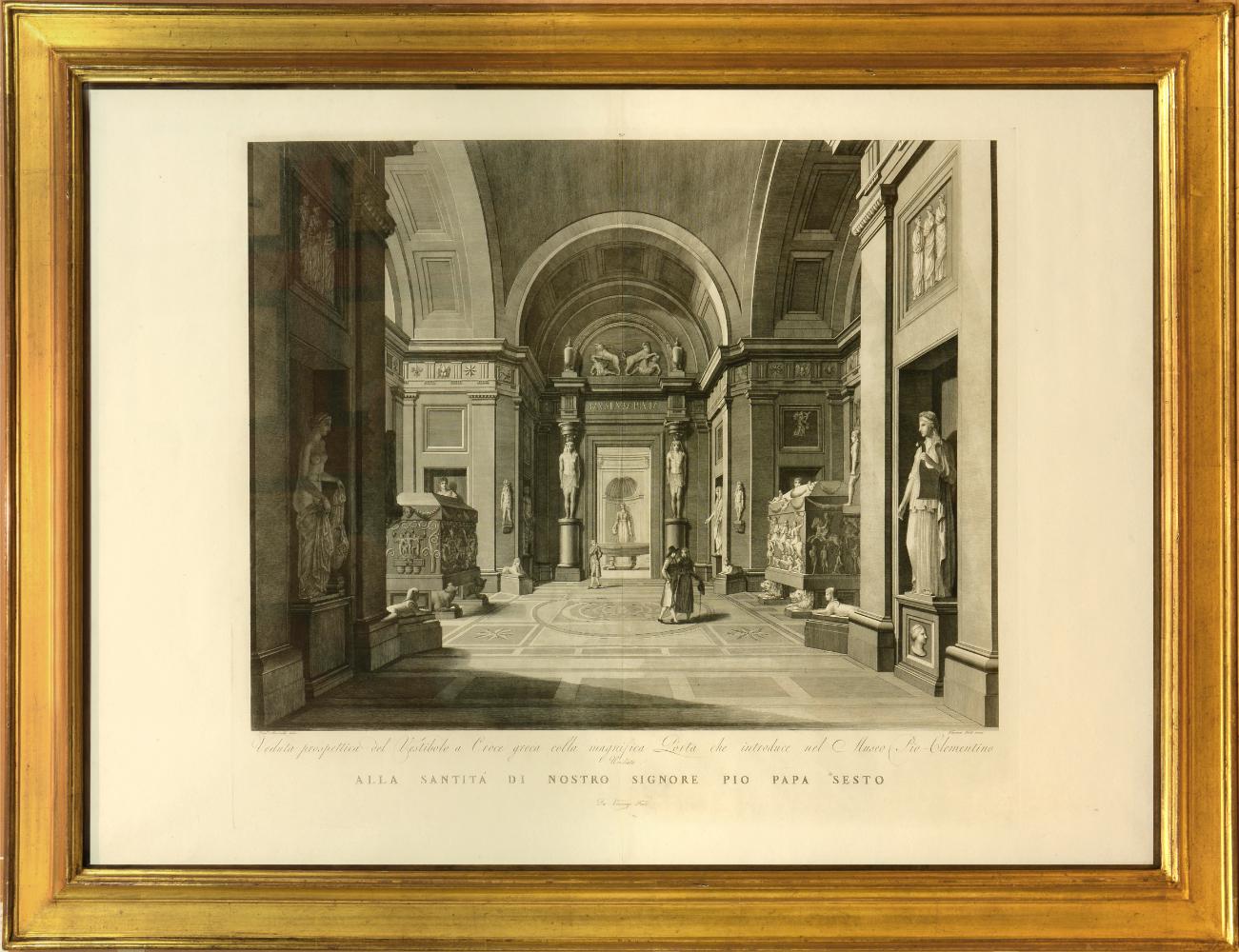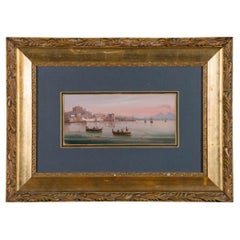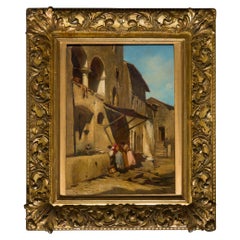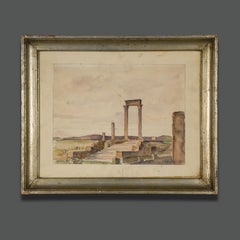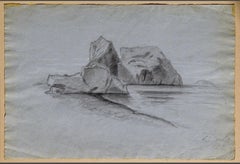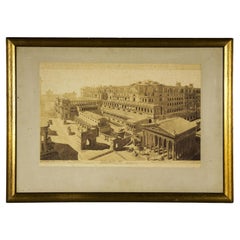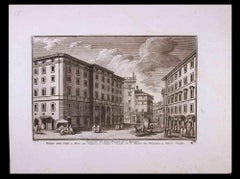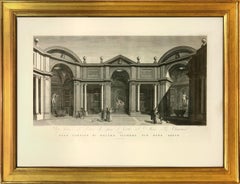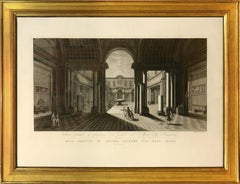Objekte ähnlich wie Pair of a Period italian
Möchten Sie mehr Bilder oder Videos?
Zusätzliche Bilder oder Videos von dem*der Anbieter*in anfordern
1 von 13
Vincenzo BenvenutiPair of a Period italian1920 ca.
1920 ca.
1.037 €Einschließlich MwSt.
Angaben zum Objekt
Pair of a Period Italian Grand Tour Litographies
Beautiful and important pair of architectural studies of the Roman Forum as they appeared in the time of the Empire precisely, as the inscriptions in the works attest, in 315 B.C.
In particular, the palaces of Caligula and the Vestal Virgins are depicted in all their incredible magnificence in one, and those of Caesar Octavian Augustus and Septimius Severus in the other
The work of the great Italian architect Vincenzo Benvenuti in collaboration with archaeologist Olinto Spadoni dating from the 1920s/'30s
This artwork, never before on the market, comes from an important private collection and is beautified by an impressive original frame in gilded wood, in almost perfect condition.
Every item of our Gallery, upon request, is accompanied by a certificate of authenticity issued by Sabrina Egidi official Expert in Italian furniture for the Chamber of Commerce of Rome and for the Rome Civil Courts.
The artworks are also protected by glass
Our company has been present on this platform for many years, with numerous sales made and just as many excellent reviews received that you can under our Furniture account.
The need for a new headquarters for the Cassa di Risparmio began to be talked about in 1882:the municipality was asked to cede an area at the then Piazza Vitelli for the building of the new residence and, two years later,the Cassa purchased the Bufalini stable and another house.
The goal was to erect a building that would be highly visible as a testimony to the relevance now assumed by the institution and at the same time contribute to the municipal project of restructuring and beautifying “Piazza di sopra.”
In 1901 a competition was announced for the new headquarters that was to rise between Via XI Settembre, the Palazzo Vecchio Bufalini and a se¬tion of Piazza Vitelli obtained following the demolition of the church of San Fortunato.
The commission,chaired by Giovanni Magherini Graziani,among the 14 projects presented chose that of the architect Vincenzo Benvenuti,entitled “Virtus et Diligentiae”.Laying the foundation stone in August 1904,the building was inaugurated in July 1912.
Vincenzo Benvenuti, a friend of Bishop Faloci Pulignani, distinguished himself in Foligno.
He worked, among other things, on the church of Madonna delle Grazie, the facade of Madonna del Pianto, but above all on the two facades of the Cathedral of San Feliciano.
In the period between the two wars, civil architecture, while tending to preserve established styles, also tried to produce and apply a new style.
Religious architecture for its part promoted competitions for the construction of churches not only in Italy, but also abroad (e.g., in the neocolonies).
In Foligno the only examples of the period are the Church of the Sacred Heart, at St. Paul's Workers' Homes, and the rebuilding of the Canonicals.
This artwork is shipped from Rome. Under existing legislation, any artwork in Italy created over 70 years ago by an artist who has died can requires a license for export regardless of the work’s market price. The shipping may require additional handling days to require the license according to the destination of the artwork.
Dimensions are frame included
- Schöpfer*in:Vincenzo Benvenuti (1878 - 1956, Italienisch)
- Entstehungsjahr:1920 ca.
- Maße:Höhe: 50 cm (19,69 in)Breite: 33 cm (13 in)Tiefe: 2 cm (0,79 in)
- Medium:
- Bewegung und Stil:
- Zeitalter:
- Zustand:
- Galeriestandort:Roma, IT
- Referenznummer:1stDibs: LU2883217033282
Anbieterinformationen
Neu bei 1stDibs
In den letzten sechs Monaten beigetreten.
Noch keine Bewertungen
Geprüfte*r Anbieter*in
Jede*r Anbieter*in erfüllt strenge Standards bezüglich Echtheit und Zuverlässigkeit
Gründungsjahr 1990
1stDibs-Anbieter*in seit 2025
Typische Antwortzeit: 5 Stunde
- VersandAngebot wird abgerufen …Versand von: Roma, Italien
- Rückgabebedingungen
Einige Inhalte dieser Seite wurden automatisch übersetzt. Daher kann 1stDibs nicht die Richtigkeit der Übersetzungen garantieren. Englisch ist die Standardsprache dieser Website.
Authentizitätsgarantie
Im unwahrscheinlichen Fall eines Problems mit der Echtheit eines Objekts kontaktieren Sie uns bitte innerhalb von 1 Jahr für eine volle Rückerstattung. DetailsGeld-Zurück-Garantie
Wenn Ihr Objekt nicht der Beschreibung entspricht, beim Transport beschädigt wurde oder nicht ankommt, kontaktieren Sie uns bitte innerhalb von 7 Tagen für eine vollständige Rückerstattung. DetailsStornierung innerhalb von 24 Stunden
Sie können Ihren Kauf jederzeit innerhalb von 24 Stunden stornieren, ohne jegliche Gründe dafür angeben zu müssen.Geprüfte Anbieter*innen
Unsere Anbieter*innen unterliegen strengen Dienstleistungs- und Qualitätsstandards, wodurch wir die Seriosität unserer Angebote gewährleisten können.Preisgarantie
Wenn Sie feststellen, dass ein*e Anbieter*in dasselbe Objekt anderswo zu einem niedrigeren Preis anbietet, werden wir den Preis entsprechend anpassen.Zuverlässige weltweite Lieferung
Unsere erstklassigen Versandunternehmen bieten spezielle Versandoptionen weltweit, einschließlich individueller Lieferung.Mehr von diesem*dieser Anbieter*in
Alle anzeigenSigniertes italienisches Gemälde von Ippolito Caffi aus dem 19. Jahrhundert
Von Ippolito Caffi
Schönes und bedeutendes Gemälde, das dem großen Künstler Ippolito Caffi aus dem 19. Jahrhundert zugeschrieben wird.
Tempera auf Leinwand, aufgeklebt auf eine Platte.
Es zeigt den Gol...
Kategorie
Mittleres 19. Jahrhundert, Italienische Schule, Landschaftsgemälde
Materialien
Tempera, Papier
Signiertes Gemälde von Enrico Coleman aus dem 19. Jahrhundert
Von Enrico Coleman
Ein bedeutendes Gemälde eines der repräsentativsten italienischen Künstler des 19. Jahrhunderts, Enrico Coleman.
Es stellt ein Dorf dar, das höchstwahrscheinlich aus Latium stammt, v...
Kategorie
Spätes 19. Jahrhundert, Alte Meister, Landschaftsgemälde
Materialien
Leinwand, Papier, Öl
Zeitraum Italienisch signiert Grand Tour Aquarell
Zeitraum Italienisch signiert Grand Tour Aquarell
Schönes Aquarell, das die antike römische Kolonie Timgad darstellt
Signiert, datiert und in der rechten unteren Ecke angebracht
Ti...
Kategorie
Frühes 20. Jahrhundert, Italienische Schule, Landschaftszeichnungen und ...
Materialien
Glas, Holz, Papier, Wasserfarbe
Francesco Paolo Michetti Period Italian Landscape Signed Drawing
Von Francesco Paolo Michetti
Francesco Paolo Michetti Period Italian Landscape Signed Drawing
Beautiful and evocative work assigned to Francesco Paolo Michetti, one of the greatest Italian artists at the turn of...
Kategorie
Spätes 19. Jahrhundert, Italienische Schule, Landschaftszeichnungen und ...
Materialien
Papier, Wasserfarbe
1930er Jahre Italienische signierte und archivierte römische Landschaft
Von Giovanni Omiccioli
Ein wichtiges und seltenes Gemälde des großen italienischen Avantgarde-Künstlers Giovanni Omiccioli.
Es zeigt die so genannte Spina di Borgo, das Viertel vor dem Petersdom, das dem E...
Kategorie
Frühes 20. Jahrhundert, Italienische Schule, Landschaftsgemälde
Materialien
Holz, Öl
Signiertes italienisches Gemälde im Perioid Grand Tour-Stil
Schönes Ölgemälde auf Leinwand mit einer Darstellung des Forum Romanum, insbesondere
der Tempel des Jupiter Stator.
Ein wichtiges Beispiel für die Grand-Tour-Malerei, dieses wunderb...
Kategorie
Spätes 19. Jahrhundert, Alte Meister, Landschaftsgemälde
Materialien
Leinwand
Das könnte Ihnen auch gefallen
Ein Paar italienische Grand-Tour-Litographien aus der Zeit
Schönes und wichtiges Paar architektonischer Studien des Forum Romanum, wie es zur Zeit des Imperiums aussah, genauer gesagt, wie die Inschriften in den Werken bezeugen, im Jahr 315 ...
Kategorie
Frühes 20. Jahrhundert, Italienisch, Grand Tour, Drucke
Materialien
Glas, Holz, Papier
Convento dei Padri Eremiti di S. Agostino – Giuseppe Vasi – Ende des 18. Jahrhunderts
Von Giuseppe Vasi
Convento dei Padri Eremiti di S. Agostino ist eine Original-Schwarz-Weiß-Radierung aus dem späten 18. Jahrhundert, die von Giuseppe Vasi.
Die schöne Radierung zeigt einen Blick auf...
Kategorie
Spätes 18. Jahrhundert, Alte Meister, Figurative Drucke
Materialien
Radierung
FEOLI. Veduten des Pio-Clementino-Museums
Von Vincenzo Feoli
Prächtige große Tafel mit der Darstellung des Vatikanischen Museums am Ende des achtzehnten Jahrhunderts von Vincenzo Feoli (1750 - 1831) nach Miccinelli und Costa.
Das Museum Pio-C...
Kategorie
1790er, Naturalismus, Interieurdrucke
Materialien
Gravur, Büttenpapier
FEOLI. Das Museo Pio-Clementino vonute del Museo Pio
Von Vincenzo Feoli
Prächtige große Tafel mit der Darstellung des Vatikanischen Museums am Ende des achtzehnten Jahrhunderts von Vincenzo Feoli (1750 - 1831) nach Miccinelli und Costa.
Das Museum Pio-C...
Kategorie
1790er, Naturalismus, Interieurdrucke
Materialien
Gravur, Büttenpapier
FEOLI. Das Museo Pio-Clementino vonute del Museo Pio
Von Vincenzo Feoli
Prächtige große Tafel mit der Darstellung des Vatikanischen Museums am Ende des achtzehnten Jahrhunderts von Vincenzo Feoli (1750 - 1831) nach Miccinelli und Costa.
Das Museum Pio-C...
Kategorie
1790er, Naturalismus, Interieurdrucke
Materialien
Gravur, Büttenpapier
FEOLI. Das Museo Pio-Clementino vonute del Museo Pio
Von Vincenzo Feoli
Prächtige große Tafel mit der Darstellung des Vatikanischen Museums am Ende des achtzehnten Jahrhunderts von Vincenzo Feoli (1750 - 1831) nach Micenelli und Costa.
Das Museum Pio-Cl...
Kategorie
1790er, Naturalismus, Interieurdrucke
Materialien
Gravur, Büttenpapier
